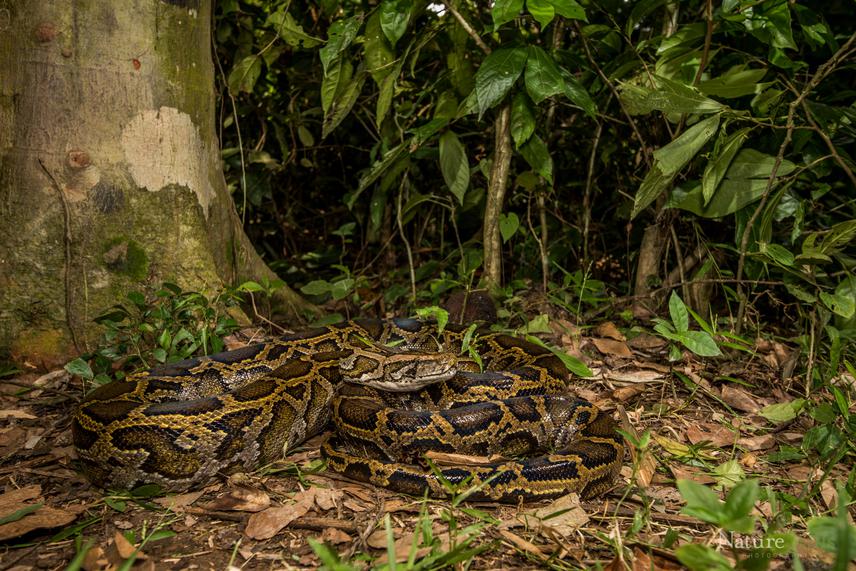Shahriar Caesar Rahman
Other projects
The overall aim of the project is to increase our understanding of Burmese python ecology in a forest-agriculture mosaic landscape and use that knowledge to formulate a sustainable management plan for pythons in human modified ecosystem.

Hasan - The Burmese Python (Python bivittatus).
Burmese python (Python bivittatus) is an iconic snake species that is best known through the pet trade and as an invasive species in Florida, and has been the subject of intensive studies for the last few years, as concern grown about their impact as invaders. The species believed to be declining throughout Asia and is listed as Vulnerable by the IUCN, and regulated on CITES Appendix 1. Despite their current status, almost nothing is known about their ecology in the native range. In particular, there is little to no detailed information available on python thermal biology, habitat preference, movement patterns, behaviour or home range size. The lack of these data makes conservation and management strategies difficult to develop and implement. In particular, such information would provide great insight into the role that habitat loss may play in python declines, and if the characterization of Burmese pythons as habitat generalists is indeed accurate. Once continuously distributed, python populations are now largely fragmented in small and disjunct populations in Bangladesh. One of the reasons for their decline in Bangladesh could be attributed to human exploitation. Pythons are commonly persecuted out of fear and consumed by local ethnic groups in Bangladesh.
With that in mind, we have initiated the first ever radio telemetry study of Burmese python, or any snake, in Bangladesh in 2013. To date, we have radio tracked seven adult Burmese pythons and continuing the study. We conduct regular outreach work in local communities and provide employment opportunities by hiring local residents as parabiologists who are responsible for collecting ecological information and daily tracking of snakes.
The specific objectives of the project are:
1) To use radio telemetry to understand Burmese python spatial ecology, and habitat associations
2) Use this information to help plan conservation actions for Burmese pythons in Bangladesh
3) Develop an appreciation and sense of investment in Burmese python conservation within the local area
4) Build trust and relationship with local communities and develop a model to mitigate human-python conflict and python hunting